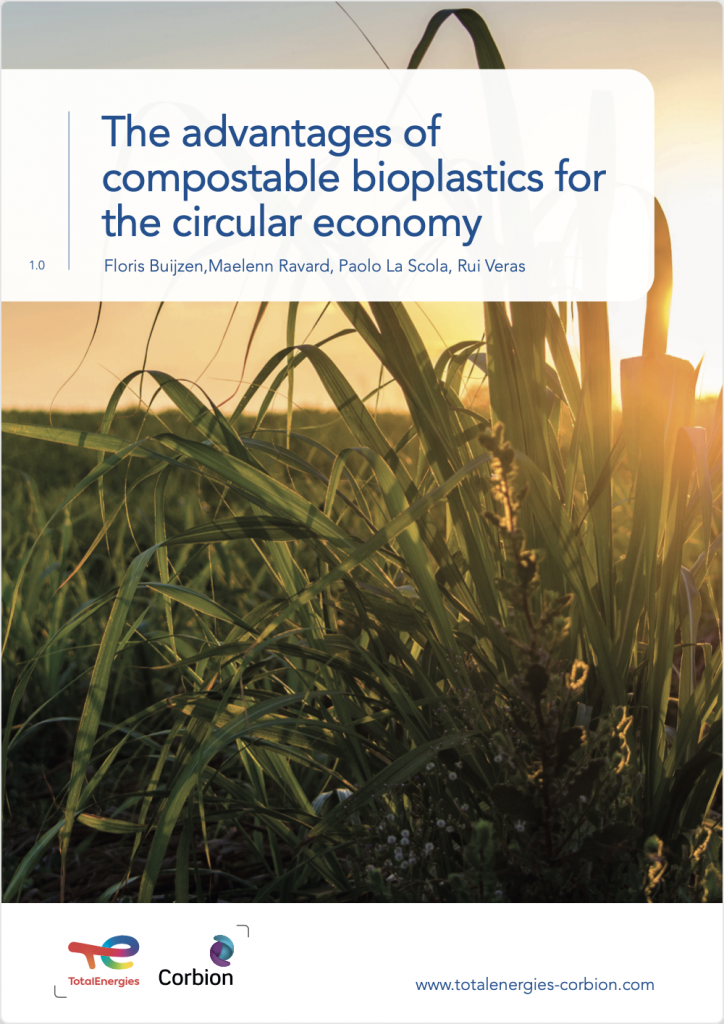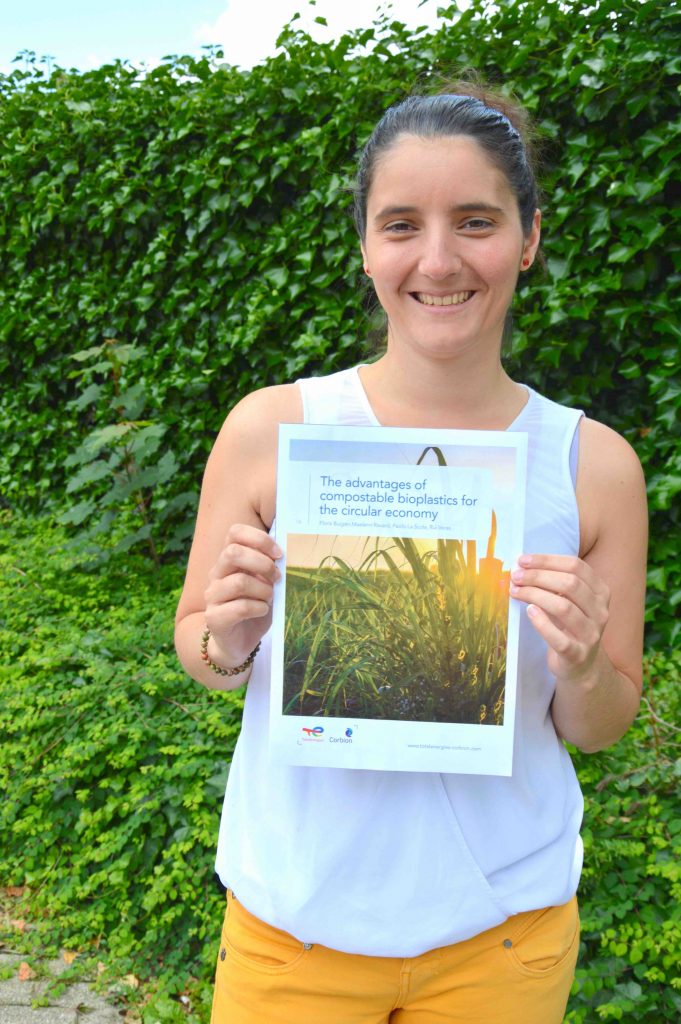
TotalEnergies Corbion publishes a report on PLA compostability entitled “The advantages of compostable bioplastics for the circular economy”. The report advises on product design for compostable packaging when it contributes to the diversion of biowaste from landfill or incineration, reduction of the biowaste stream contamination, increasing efficacy of biowaste collection, and when the packaging is hardly separable from its organic waste content.
Building a sustainable economy and reaching the climate neutrality targets, requires innovative materials and improvement in waste management. PLA, a biobased, recyclable, and versatile material, offers an additional, sustainable, and efficient end-of-life option: composting.
Composting is crucial in achieving a sustainable future. With composting, the carbon drawn from the atmosphere during the plant feedstoock growth, is brought back to the soil. Composting also brings nutrients back to the earth, increasing their quality and health without using chemical fertilizers. Composting biowaste mitigates the carbon emissions, as landfilling biowaste emits higher amounts of Green House Gases (CO2, CH4), which contribute to global warming.
Compostable bioplastics offer an alternative to conventional (fossil-based, non-biodegradable) plastic items, which are usually not recycled because of their organic waste content – for instance, teabags, coffee capsules and biowaste collection bags.
Certified compostable bioplastic packaging can be thrown in the biowaste bin with its organic waste content, avoiding landfilling and incineration and reducing contamination of the biowaste stream with conventional plastics.

“Organic recycling plastic packaging, commonly known as composting, is a complementary end-of-life option. It contributes to achieving wider recycling targets, reducing carbon footprint and providing a valuable final product: compost.” – states Maelenn Macedo Ravard, Sustainability and Regulatory Manager at TotalEnergies Corbion, and author of the report.
Olga Kachook, Director, Bioeconomy & Reuse Initiatives at GreenBlue, USA, says that “With the clock ticking on climate change, it’s worth celebrating the growing momentum behind composting as a solution and the role that compostable packaging plays in diverting food scraps from landfills”.
Plastic packaging will always be required for convenience, hygiene and functionality aspects. Using biobased, compostable bioplastics like PLA fulfils all these criteria and responds to climate challenges while having a reduced carbon footprint and a sustainable end-of-life option. To know more about the advantages of compostable plastics, read TotalEnergies Corbion’s new report available at: https://www.totalenergies-corbion.com/about-pla/compostable/
Source
TotalEnergies Corbion, press release, 2022-06-22.
Supplier
GreenBlue
TotalEnergies Corbion
Share
Renewable Carbon News – Daily Newsletter
Subscribe to our daily email newsletter – the world's leading newsletter on renewable materials and chemicals









